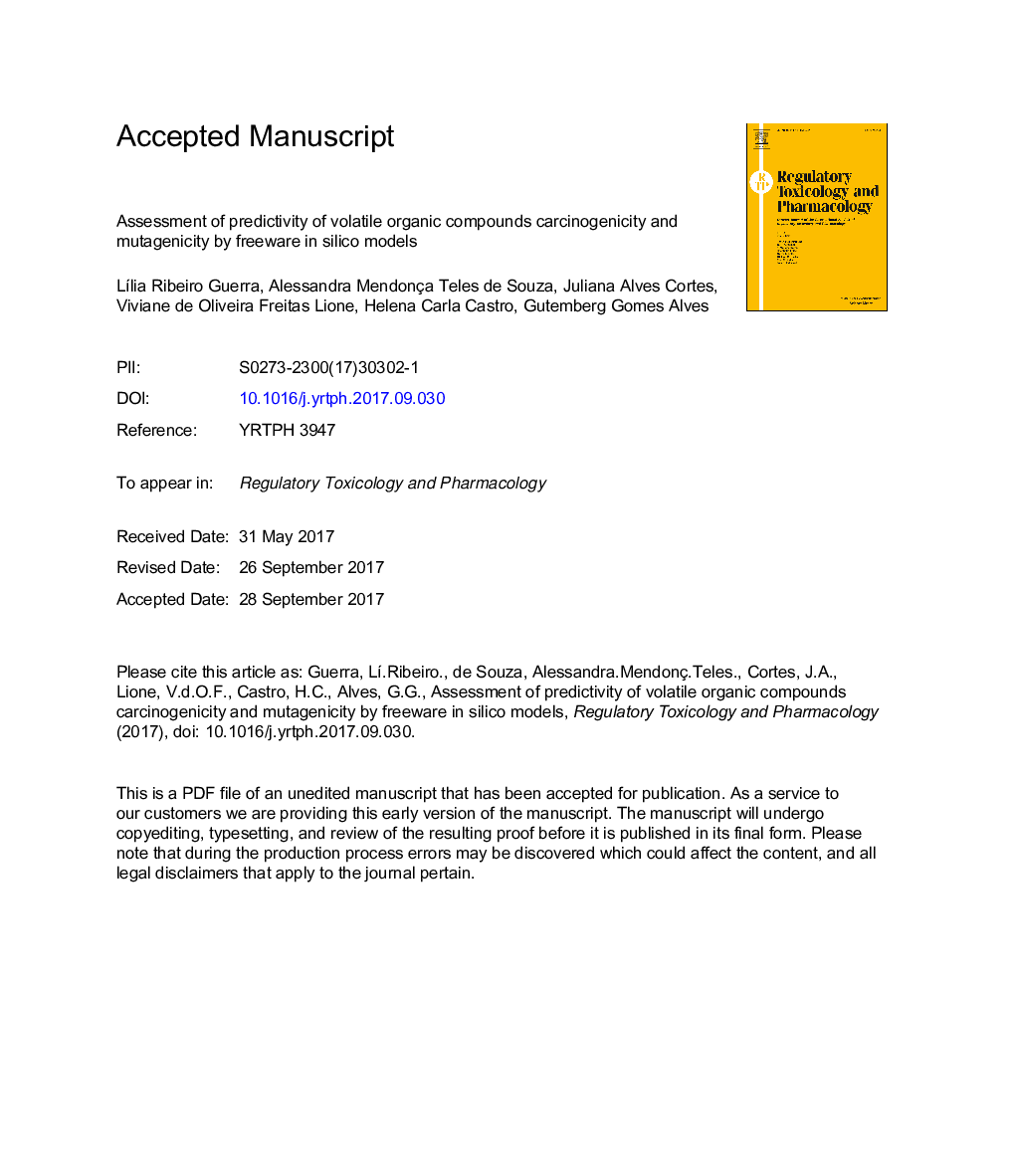| Article ID | Journal | Published Year | Pages | File Type |
|---|---|---|---|---|
| 8551896 | Regulatory Toxicology and Pharmacology | 2017 | 37 Pages |
Abstract
The application of in silico methods is increasing on toxicological risk prediction for human and environmental health. This work aimed to evaluate the performance of three in silico freeware models (OSIRIS v.2.0, LAZAR, and Toxtree) on the prediction of carcinogenicity and mutagenicity of thirty-eight volatile organic compounds (VOC) related to chemical risk assessment for occupational exposure. Theoretical data were compared with assessments available in international databases. Confusion matrices and ROC curves were used to evaluate the sensitivity, specificity, and accuracy of each model. All three models (OSIRIS, LAZAR and Toxtree) were able to identify VOC with a potential carcinogenicity or mutagenicity risk for humans, however presenting differences concerning the specificity, sensitivity, and accuracy. The best predictive performances were found for OSIRIS and LAZAR for carcinogenicity and OSIRIS for mutagenicity, as these softwares presented a combination of negative predictive power and lower risk of false positives (high specificity) for those endpoints. The heterogeneity of results found with different softwares reinforce the importance of using a combination of in silico models to occupational toxicological risk assessment.
Related Topics
Life Sciences
Environmental Science
Health, Toxicology and Mutagenesis
Authors
LÃlia Ribeiro Guerra, Alessandra Mendonça Teles de Souza, Juliana Alves Côrtes, Viviane de Oliveira Freitas Lione, Helena Carla Castro, Gutemberg Gomes Alves,
